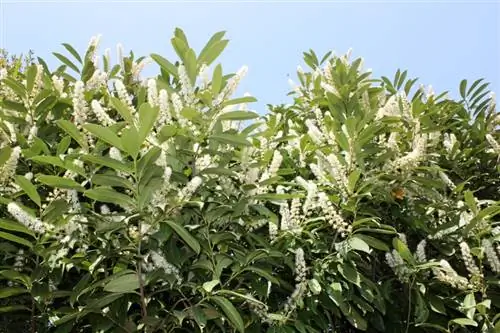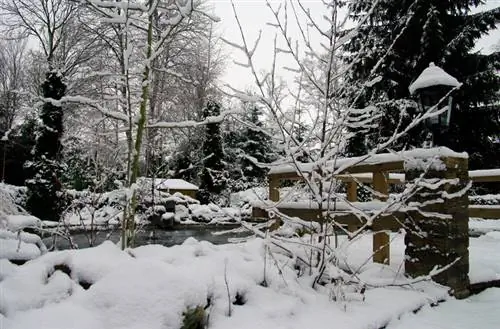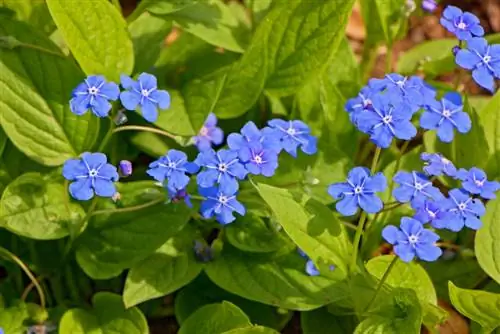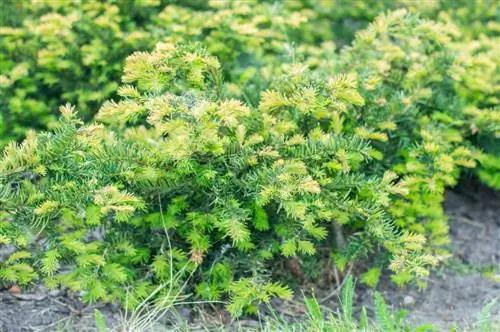- Author admin [email protected].
- Public 2023-12-16 16:46.
- Last modified 2025-01-23 11:20.
Ground cover cherry laurel grows much more in width than in height and smothers weeds and unwanted plants with its dense foliage. As a visual design element in the garden, it impresses with its robustness and uncomplicated care.
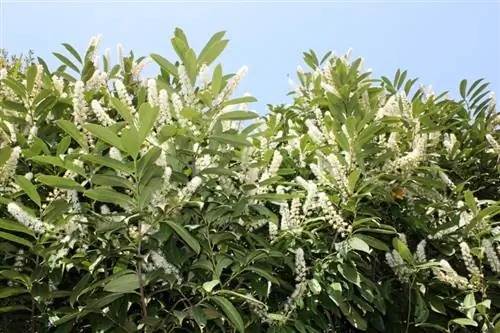
What should you know about the cherry laurel ground cover?
The cherry laurel ground cover is an undemanding, robust plant that grows quickly and smothers weeds. It prefers partially shaded locations, but also thrives in sun and shade. The laurel cherry requires loose soil, fertilization and regular pruning for a well-groomed appearance.
The growth habit
Creeping cherry laurel grows flat and reaches a height of thirty to eighty centimeters, depending on the species. The elongated, shiny and deep green leaves remain on the bush all year round, so that the ground cover plant also looks very decorative in autumn or winter. In contrast to other cherry laurel species, the ground-covering varieties only produce very sparse flowers. If they appear, you will be enchanted by their small, upright grapes, which smell aromatically of honey.
For which locations is the ground cover suitable
Cherry laurel is quite undemanding and you can use the ground cover to green almost any area of the garden. It prefers partially shaded locations, but also thrives in sunny places if there is enough soil moisture. The laurel cherry even tolerates shade. Even north-facing slopes are no problem for the ground cover. The creeping cherry laurel is often used to underplant trees and bushes.
Special features when planting
Permanently loosen the soil with gravel or sand so that the cherry laurel finds optimal conditions. Since the laurel cherry grows quite quickly, you only need three to four plants per square meter.
Fertilize the ground cover properly
Provide the creeping cherry laurel with a continuous fertilizer in early spring and repeat the fertilization in June or July. Do not over-fertilize the ground cover so that the laurel cherry does not receive too many nutrients and grows densely.
Cut regularly
So that the planted area looks well-groomed and the laurel cherry does not grow out of control, the plants must be cut into shape once or twice a year. When pruning, use sharp cutting tools (€14.00 on Amazon) and avoid using electric hedge trimmers. This would damage a lot of leaves, giving the ground cover a torn appearance.
Overwintering the creeping laurel cherry
The plant is partially hardy and only requires additional winter protection in harsh areas. Twigs are well suited for covering the ground cover over the entire area.
Tips & Tricks
Creeping cherry laurel is also very suitable for permanently greening troughs and balcony boxes. If you leave some space between the individual plants, you can brighten up the green area with spring and summer bloomers.

